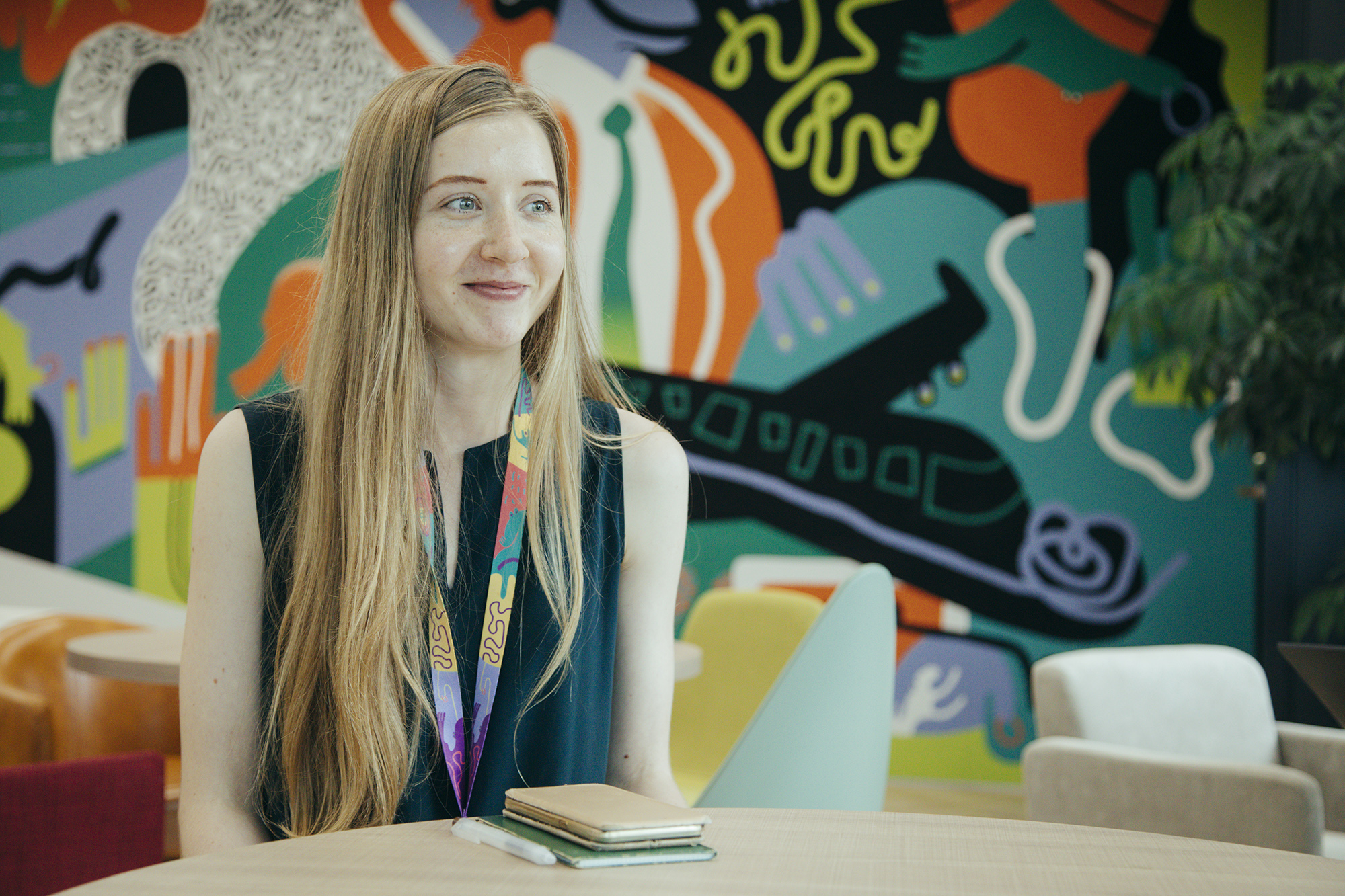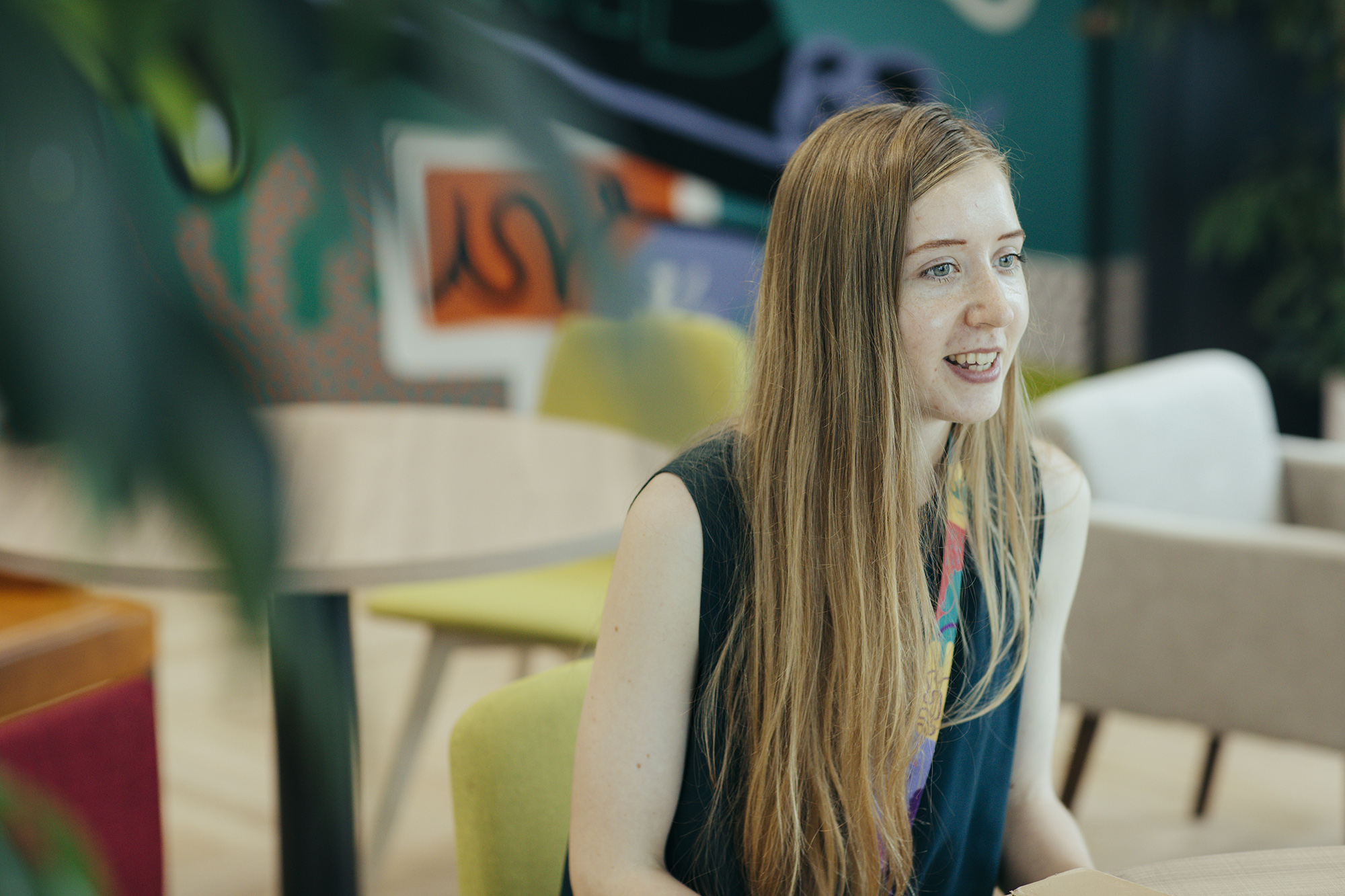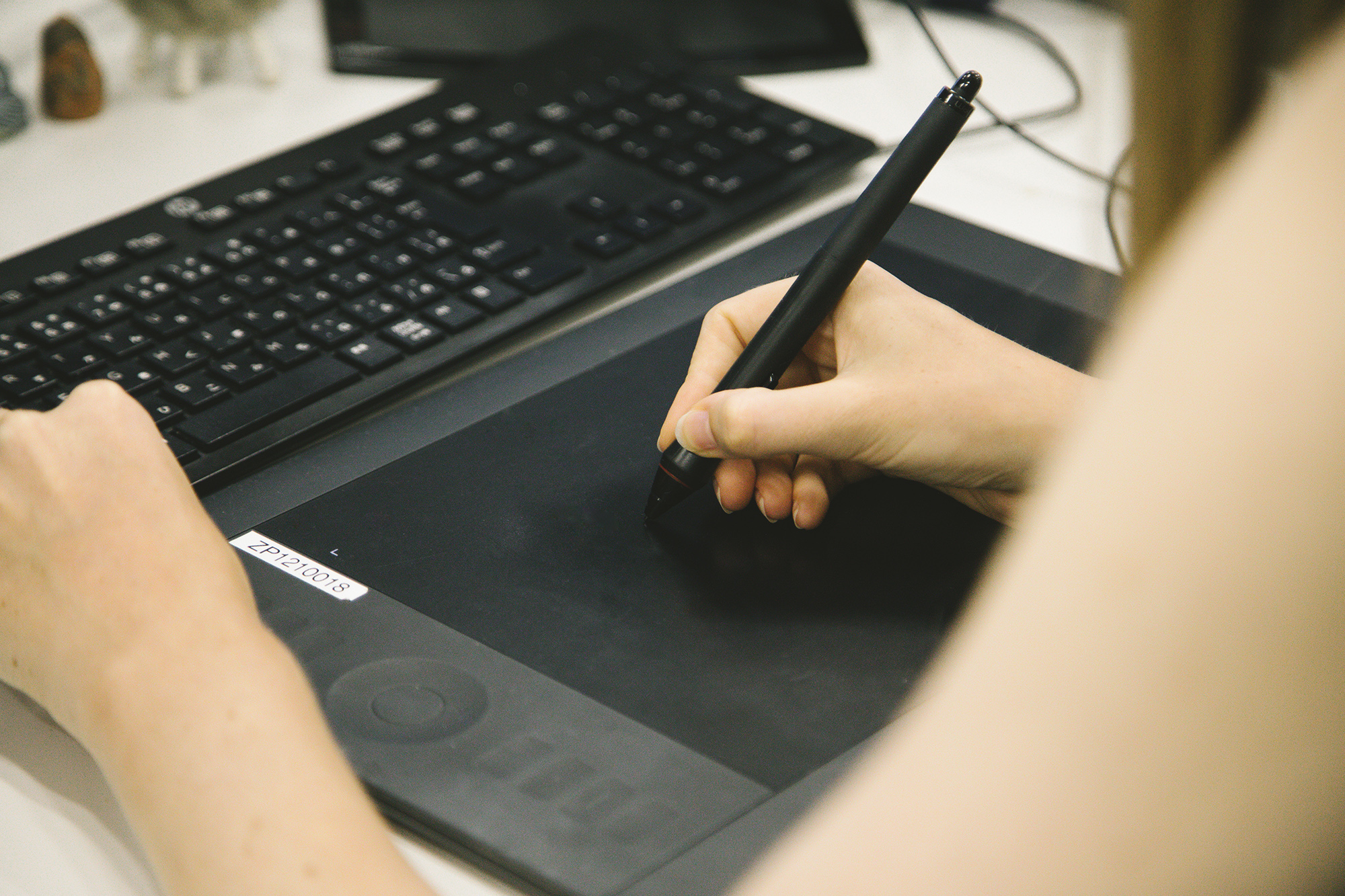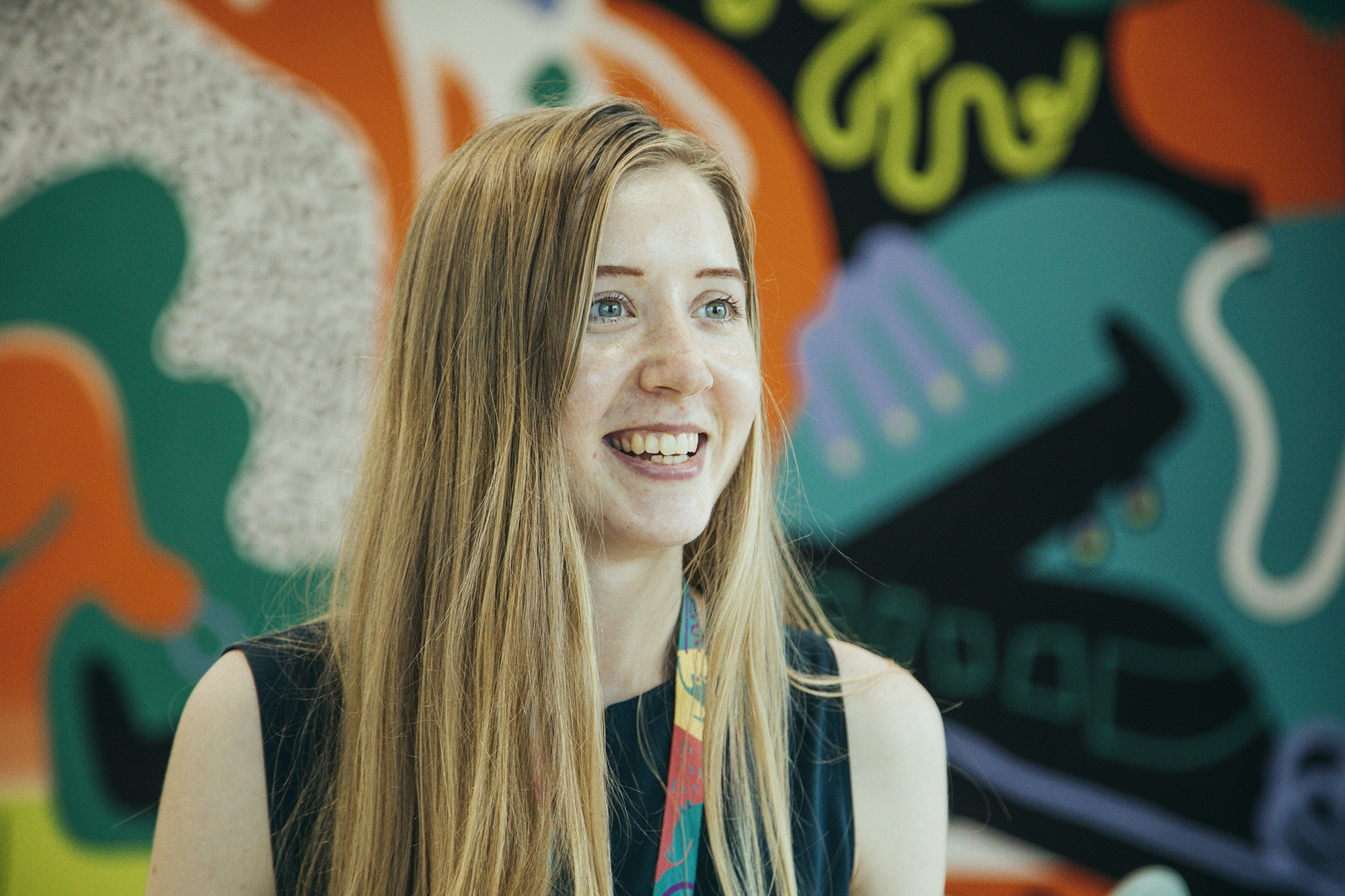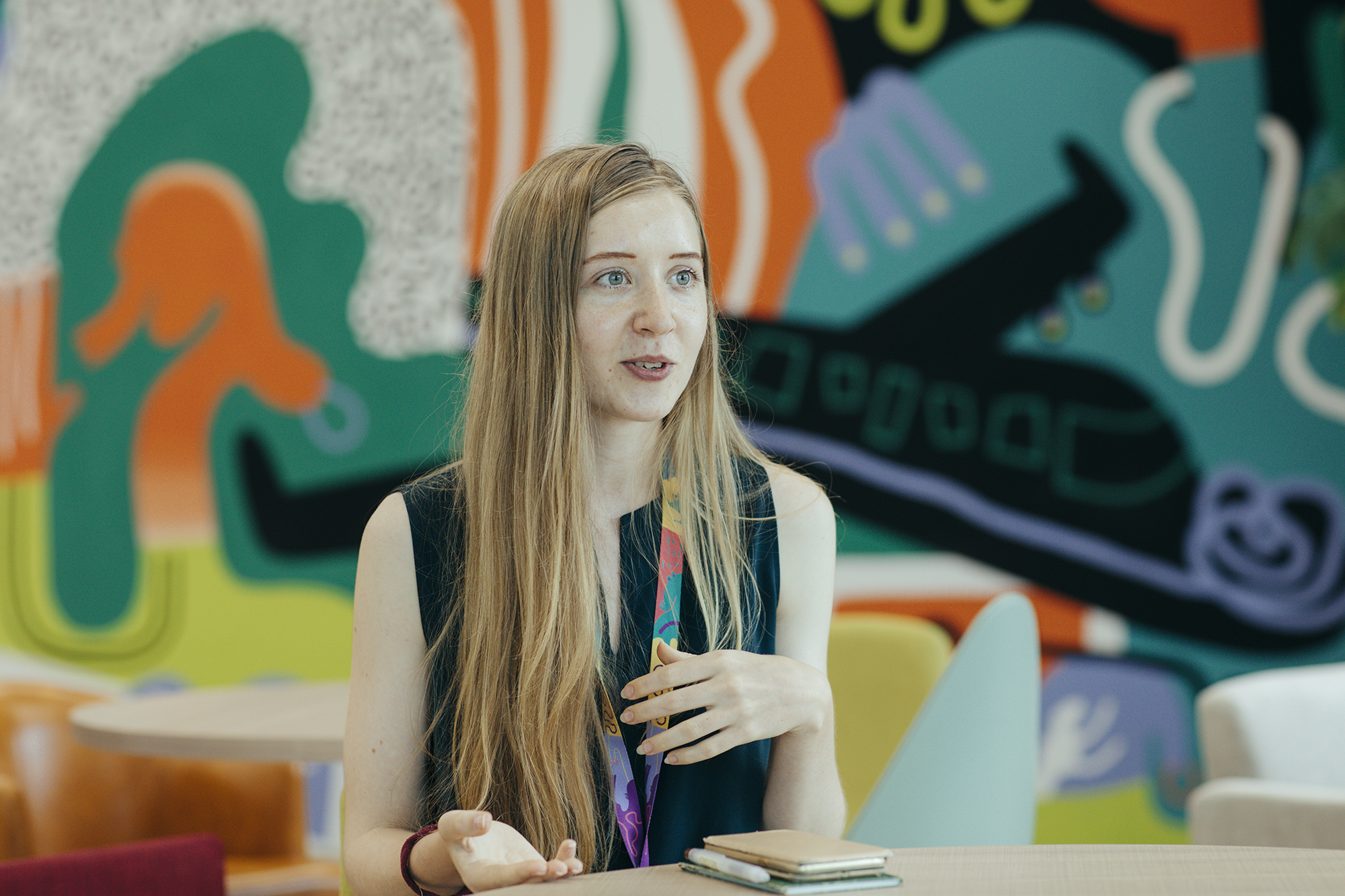Working as a Web Designer in Japan

by Florian
What is it like working as a designer in Japan? What are the similarities, where are the differences? And what about communication in Japanese? We talked to Tanya, a young designer working at a Japanese internet company.
コンテンツ
Tanya’s Profile
Name: Tanya (26)
Country: Ukraine
Major: Graphic Design
Industry: IT/Web
Japanese Level: N1
Work status: New graduate (1st year)
Job hunt: ~3 job fairs, ~4 applications, 1 internship, 1 job offer
Q: First, tell me a bit about yourself.
My name is Tanya, I came from Ukraine. I studied graphic design back at home, and currently, I’m working as a designer in Japan. I’ve been learning Japanese for quite a long time by myself. I started learning in my home country and then moved to Japan to study at a Japanese language school called Linguage. I stayed there for one year, and during that time, I also did an internship at the company that I’m working at now.
Q: So in university, you didn’t take any Japanese classes?
No, my major in my university was graphic design. I studied Japanese by myself or with a tutor, not professionally.
Why Japan?
Q: What was your main incentive for coming to Japan? Why did you first get interested in the country? I know it’s a very common question, but… (laughs)
I guess like anybody else among foreigners working in Japan I liked anime and manga when I was a small child. And when I grew up, I became interested in the culture of Japan, the history and traditions, the way of living – that’s why I wanted to try living here on my own. That was the main thing that motivated me to come here.
Q: When was the moment where you decided that you wanted to work in Japan?
I was already thinking about that before I went to language school in Japan. Actually, I went to the school because I wanted to search for a job in Japan. I was interested in working here because Japanese design is really unique and cute, and I’ve always liked drawing characters and illustrations. My thought process was that this type of work was higher valued here than abroad.
In Europe, you’re not surrounded by that many illustrations in daily life, right? Newspapers are too serious, websites are on the simple side and very structured … but Japanese sites are really cute and appeal to the visitors’ emotions. Plus it’s easier to remember information when they’re accompanied by illustrations.
Q: Ok, your original interest came from the illustrative side. Japanese web design is often considered to be kind of old-fashioned compared to the West…
It’s unique, I’d say… (laughs) Yes, but you can also find simple design in Japan, both on the web and elsewhere. There are lots of different styles here!
Learning Japanese
Q: Overall I think your time studying Japanese can be broken down into three stages: Before you came to Japan, your time at the Japanese school, and now. How has your Japanese level changed over time?
In my home country, I was able to get JLPT N2 by studying on my own and with teachers. My Japanese back then was enough for daily conversation. So when I came to Japan for language school, I didn’t feel uncomfortable. Most of the time, I could understand what people were talking about and all the announcements in the subway and other public places. But what I didn’t know so well yet were all the words connected to business language and formal conversations.
At the Japanese language school, we learned how to search for a job in Japan. We practiced writing e-mails in Japanese, Japan-specific business manners, those kinds of things. While I was studying at the school, I got up to N1 level, took the test, and passed it. Currently, I’m still not completely fluent in Japnese – I think foreigners can never become truly fluent, actually – but right now, I understand more vocabulary in my specific field. I can speak more freely, but there are still a lot of things I have to learn.
Q: Going up all the way to N2 while still at home … that’s pretty impressive! So until you went to the Japanese school, you had never been to Japan?
Yes. Before I reached N1 level, I was living in my home country.
Q: How did you study? Did you talk to people online or just read books…? What did your study schedule look like?
For the first two or three years, I studied by myself or with my teacher, who was Ukrainian. We talked to each other in Japanese. Sometimes I tried exchanging e-mails with Japanese people, but I never actually talked to them. It was only when I moved to a bigger city than my hometown that I could find Japanese people to talk to. So about one year before I came to Japan, I had lots of practice speaking Japanese. That helped me a lot.
Q: So you talked to students that were studying at your university?
Yes, in my hometown, I didn’t have many chances to speak Japanese. But in the city I moved to, there were both the university with students that studied a lot of Japanese as well as a tiny Japanese community. There, I was able to speak to native speakers as well.
Q: So in total, how long have you been studying Japanese?
For … five years or so, I guess.
Searching for a Job
Q: OK, let’s move on to your job hunt. How did you go about it? Did you go to job fairs?
I looked at online resources, and the school highly encouraged us to participate in job fairs. I did go to a few job fairs but my problem was that there were almost no vacancies in my field, in design … and that was the only kind of work I was interested in. Then I did my internship, and I saw how the company and the specific divisions worked. The people were very nice to me, and there was design work for me to do … and I just decided this is was my chance for a full-time job here.
Q: So you just didn’t really go a lot of seminars and info events and just focused on one company?
I went to other companies and attended their seminars, but most of them weren’t that interesting to me. Also, in many cases, I strongly felt that it wasn’t Europeans the companies were searching for, but people from other Asian countries. At my current company, there are not only Asian foreigners but people from other regions as well. So when I saw them, I thought that this might be a good environment for me.
Working as a Designer
Q: You said you studied design in your home country. How much of what you studied at university are you applying at work now?
I’m applying most of the things I learned at university. For one, there are graphic programs like Adobe Photoshop and Illustrator – I learned how to used them in university. Aside from that, there are things like the rules of composition, the ability to draw graphics and illustrations … I’m already familiar with most of this. That’s why I could start making some products and designs for companies in Japan right away.
The main difference was that until starting this job, I had been working with Cyrillic or Roman fonts. The rules of how to use text, how to use big letters and the small letters, the spacing between them … all of these rules are a bit different here because he letters in the Japanese alphabet and Chinese characters are usually equal in size. So there are different rules for balancing out the letters. In comparison, Japanese text tends to have more variation to it.
For example, Japanese designers tend to use lots of different text and letter sizes. When we have one sentence in English, we can’t make different words go up and down too much. But in Japanese text, that might even look good.
Q: What does a typical day at your work right now look like? You’re mainly doing websites – what’s your typical workflow?
I come to work a bit earlier than the beginning of the working day because I’m a fresh graduate. I practice a bit of typing in Japanese every morning and on some days I’ll do a bit of self-study or do IT terminology tests. Once work starts, we have casual morning meetings every day, and then there are some routine tasks like checking the mail. Then I finally start to do my work. How I go about it depends on what kind of website I’m making so the flow is always pretty different.
Q: Maybe you can tell us a bit more about what kind of websites you’re creating. What degree of freedom do you have when designing them?
It depends on the website, but basically, we receive instructions from the website directors. They send us their task and they describe what kind of color palette they want to use, or at least if they want a warm or cold color scheme. When you’re a designer and you’re told to just do something, that’s the absolute worst thing, so there are always some guidelines for us. We receive those from the directors, and they also tell us everything about the user: What kind of user it is, what kind of needs we should fulfill, etc.
Using these guidelines, I’m free to choose the design elements myself. I can freely decide within a specific frame, depending on the industry the client is in, the target user, and so on. I can come up with my own ideas, and I can discuss with my bosses whether those ideas are good or not. We always communicate very closely … we always check each step of the design so it’s easy for the directors to make their corrections. So overall, there is some degree of freedom and I enjoy it when I have lots of it.
Q: When you first became interested in working in Japan, it was because of the characters and illustrations. Do you also have the chance to do illustrative work at your current job?
Yes, luckily I have the chance to do that kind of work! I do illustrations not only for the designs of websites I’m making but also for my colleagues. They show me their designs and ask me for some illustrations and I just draw them, it’s really fun. I can use different styles of illustrations, that’s why I receive many different requests. I draw from different types of visual presentation … this is another fun part of the job.
Q: You’re still in your first year at this company as a regular employee. Are there any interesting projects you’ve been involved in or tasks you were especially excited for?
I never planned to do web design in the beginning. My specialty was graphic design, making advertisements, brochures, posters, and maybe some banners for the web, but I didn’t learn how to design whole websites. During my internship and later on, I had the chance to study and practice website design on the job.
Aside from web design, I recently made some illustrations for an infographic video, a type of media I’ve been interested in. I tried to do something like that during my time at university. Being able to produce the graphics for the video and seeing how all parts finally move and become alive was pretty satisfying, and people in the company enjoyed the result. So that was another fun thing to do.
Q: What was the work for that video like?
First, the managers made a storyboard and showed it to me, it was made up of simplified images showing different stages of the video. They also showed me what kind of style they want to use, what kind of colors would be appropriate, and so on. And then I just mixed it all in my head, I used the pictures from the storyboard, the color I was asked for and the style I was asked for and made my own versions of the different frames of the video.
I tried to make it so that if it was a person, the head would be on a different layer so that it could move. I did the same with hands and legs if I wanted the character to walk or do some gestures or express emotions… so eyebrows, eyes, and mouths were also on different layers. After finishing these frames, I sent them to my managers, who then gave them to the video team and they were animated, had sound added, and then I saw the finished product. But my part was only making the illustrations.
Check out the finished video below!
Communication at Work
Q: At your current company, everyone is speaking Japanese. How is communication like? Have you run into any difficulties?
Communication is not only about understanding the language, right? Japan’s culture and traditions are really different from the country I grew up in, so even though I understand the language there, are things that I can’t quite get my head around or that I can’t accept, and the same goes for the Japanese side. It might be that they don’t understand some of my actions.
Foreigners working in Japanese companies are usually told they’re too individually minded. They’re trying to work more independently but in Japan, communication, and teamwork are more important. I think people who want to work in Japan should be ready for this. They should know how to respect others, how to be patient, how to understand different opinions … I think that’s important to be able to work here.
Q: Can you gives us an example of an instance where you were frustrated about some part about communication or how you resolved it?
Hmm… that’s difficult (laughs).
Q: It’s OK if it’s a thing you’re still struggling with!
Well, for example, there is this thing called “hourensou” (報連相, ほうれんそう). You need to write a lot of small reports and you need to inform your boss or your colleagues about each small step of your work process. If you make a mistake, you’re also supposed to immediately tell them. I think it’s a really good thing to do, but in the beginning, it was hard for me to share information about every step I made. When I was working in my home country, the bosses didn’t like it when I gave them too much information, so it was kind of the opposite. It was a struggle for me to do more and more reporting as part of my daily work.
How about the future?
Q: What are your plans for the future? Are you planning on staying in Japan long-term? Is there anything that you’d like to do while you’re here?
In the future, I want to become a freelancer but I don’t know when yet. I don’t think I’m going to stay here until the end of my life, but even if I leave Japan to move somewhere else, I’d still like to come to Japan from time to time. I miss my family very much and in corona times, I’m not able to visit my home country and that’s really sad for me.
When the corona travel bans are lifted, the first thing I will do is take a vacation and go to my home country. Being together with my family and close ones is very important, so that’s why in the future I want to get somewhat closer to Europe.
Q: Is there any specific kind of work you’re thinking about that you want to do as a freelancer?
I want to make my own projects … making a book, for example, or making a manga, or creating merchandise with my illustrations and graphics. That’s what I’ve been dreaming about since my university days. I hope I will have enough skills and knowledge to make my own projects in the future.
Q: So you already have some illustration opportunities right now, but you’d like to expand that further.
Yes, exactly. I want to improve my skills, learn some new techniques and styles of illustration.
Q: Are you satisfied with the copportunities you’re getting at your company right now?
I’m really grateful for all of my colleagues at both of the divisions I’ve worked at so far because they saw what I like and always tried to give me work that plays into those things. At this company, illustrations usually aren’t done in-house, they purchase pre-made ones or order from illustrators at other companies. But my managers and colleagues trusted me with this and they liked the results … that’s why I’m grateful for the opportunities that I have right now.
Any questions?
If you’re interested in working as a designer in Japan and still have questions, feel free to ask in the comments! We’ll check back with Tanya and give you some advice about how to prepare and find a job.
Tanya is working at Zenken Corporation, an IT/web company based in Shinjuku. For more into on the company, head to our article on it over here. You can also go straight to the recruitment sites by clicking the buttons below! Applicants are always welcome.
You want to work in Japan?
Find out how others got their jobs!
■ Job Fairs and IT, Earlwin from the Philippines
■ Online Application and Apparel, Clemence from France
■ The long job search and dealing with setbacks, Nizza from the Philippines
■ More job-hunting advice from your Senpai
Recommended Posts

How to Get Along with Your Japanese Boss
25 5月 2021 - Work, Working Culture

The 10 Most Popular Japanese Companies in 2021
19 5月 2021 - Work

